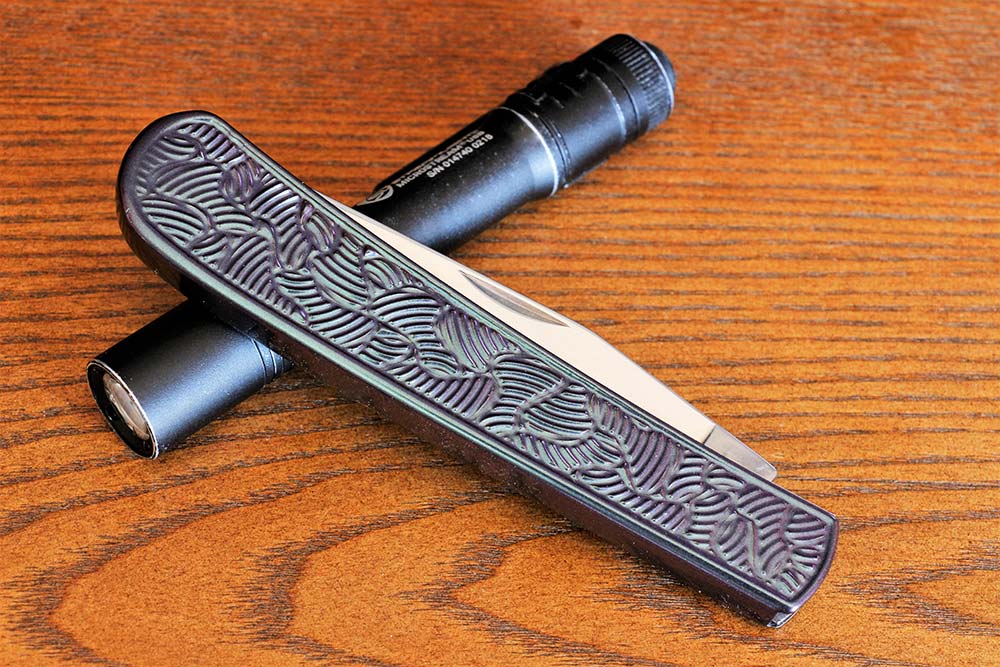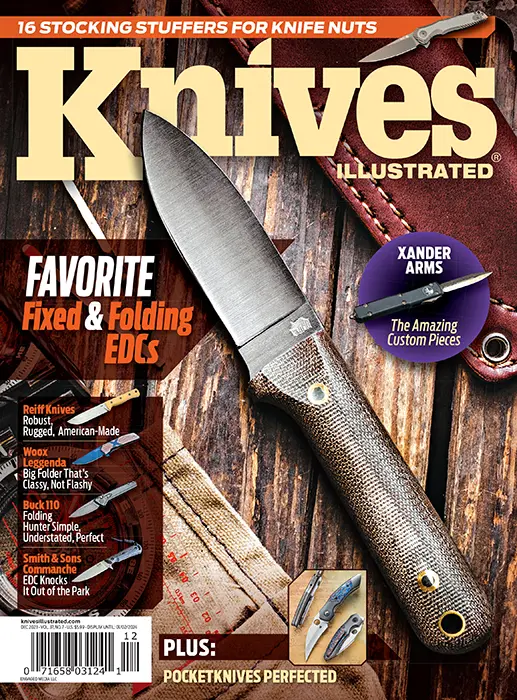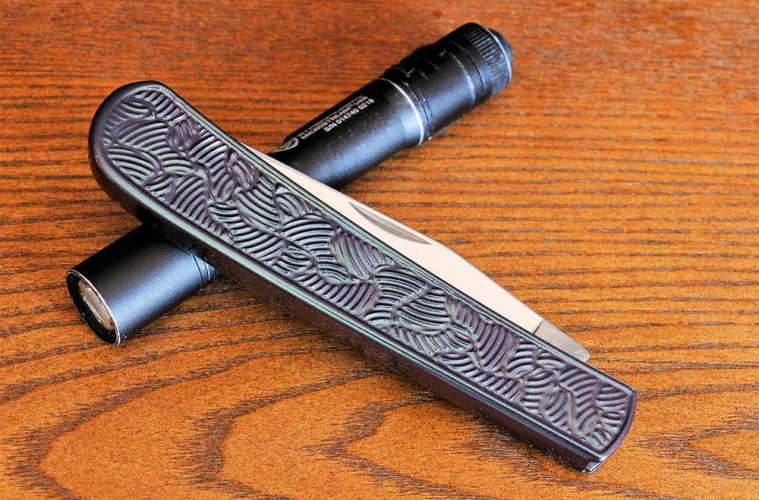TAKING KNIFE HANDLES TO THE NEXT LEVEL
Recently W.R. Case & Sons Cutlery unveiled its new Canvas line of pocketknives. No, the handles aren’t made of canvas Micarta. Rather, they represent a blank canvas for knifemaking artistry over which Case can offer a vast array of new handle styles.
Initially, 20 knives make up the Canvas collection. Instead of attaching a handle scale on each side of the knife over the frame, each knife features a three-sided brass handle wrap or outer skin that allows Case to apply any texture, pattern, or artwork.

The knives in the Case Canvas line are of the single-blade trapper pattern with a 3.25-inch clip-point blade of Tru-Sharp stainless steel.
Available designs so far include a desert skyline scene, skulls, shark, patriotic eagle, and various textured patterns. The one I bought features Spectra Cross Hatch texturing in a color the company calls Flat Iridescent Powder Coat. What color is that? Well, depending on how you hold it in the light, it’s mostly purple, no it’s green, actually it’s sort of bluish gray. It’s excellent in any light.
These single-blade trapper-style slip-joint knives feature a 3.25-inch blade with a clip-point configuration and a nicely shaped point that’s useful, while not being too thin and delicate. The steel is Case’s Tru-Sharp stainless. The closed length is 4.25 inches, meaning there’s plenty of handle for hands of all sizes. The weight is 3.5 ounces.

The Case Canvas line of knives features a wrap-around brass sleeve over the frame that allows for a wide range of design options.
I own many Case knives. Most have elegant, jigged bone scales. But this new line from Case opens up lots of new possibilities. And I really like that they introduced this idea on a single-blade trapper, which is an extremely versatile pattern.
Case is releasing these knives in limited quantities for a limited time, starting at $65.99 and up. My particular model has an MSRP of $89.99. Take a moment and check out the various Canvas line offerings at www.CaseKnives.com.
A version of this article first appeared in the November 2022 print issue of Knives Illustrated.

 Subscribe / Back Issues
Subscribe / Back Issues